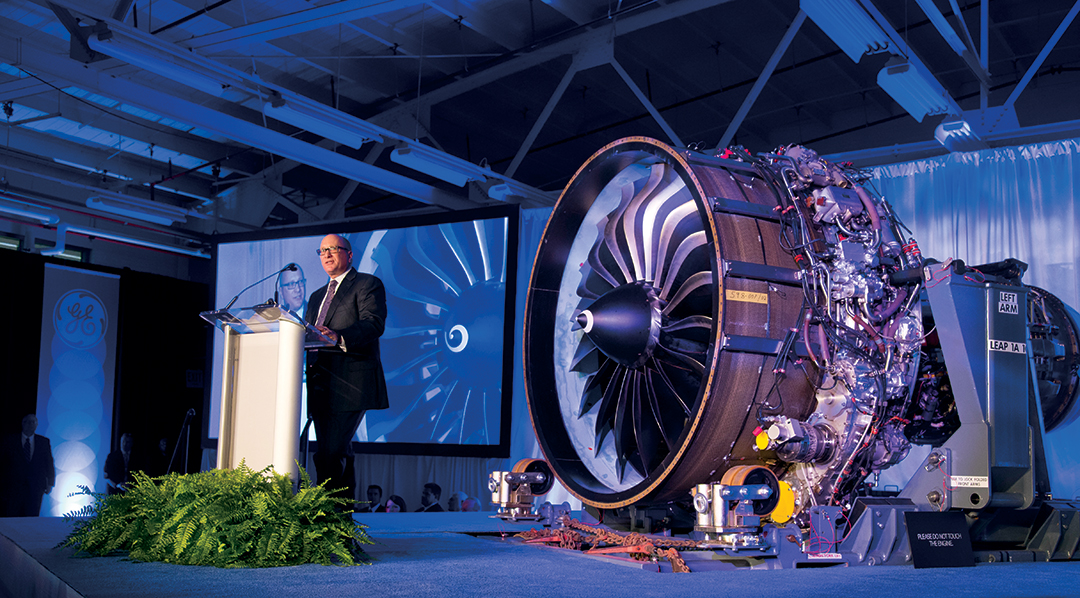The Wright brothers made aviation history by being the first men to fly, now a “funny looking” nozzle is making history once again by becoming the first 3D printed part certified by the US Federal Aviation Administration (FAA) to fly inside GE’s Commercial jet engines. We’ve covered GE’s additive manufacturing factory for the LEAP and GX9 engine parts quite often on 3DPI. Although still in its early phases, the project is bound to have a huge impact on future manufacturing practices, as it fully ushers in an era of digital production which is bound to evolve even faster in the years to come.
The 3D printed metal component, known at T25, houses the compressor inlet temperature sensor inside a jet engine. It will first be retrofitted on more than 400 currently adopted GE90-94B jet engines, which are among the most powerful around and are used mainly for Boeing’s 777 liners. The next phase will see as many as 19 3D printed fuel nozzles built into the new LEAP 1A and 1B engines, which are going to power Boeing’s 737MAX and Airbus’s A320neo planes. More fuel nozzles, along with other 3D printed parts, will also be part of the GE9X, the most powerful engines ever built.
These two motors and their 3D printed parts are already laying the base for a new era in aviation, as GE and its partner Safran have already received 8,500 orders for the LEAP (making it the fastest selling jet engine ever) and 700 orders for the GE9X, which means that they are now faced with satisfying pre-orders totaling as much as a staggering $135 billion, with the backlog growing by 25% over the last two years and the prospect of it going even larger.

“The 3D printer allowed us to rapidly prototype the part, find the best design and move it quickly to production,” said Bill Millhaem, General Manager for the GE90 and GE9X engine programs at GE Aviation. “We got the final design last October, started production, got it FAA certified in February, and will enter service next week. We could never do this using the traditional casting process, which is how the housing is typically made.”
Jonathan Clarke, program manager for the project, added that the team ended up with a faster and simpler design, and superior material properties. “Once we found a workable solution, it went straight to production,” Clarke said. “This technology is a breakthrough.” GE’s engineers are already working on a number of undisclosed or not yet approved projects involving 3D printing. As the Wright brothers demonstrated, what starts as a little jump can become a giant LEAP over time.




